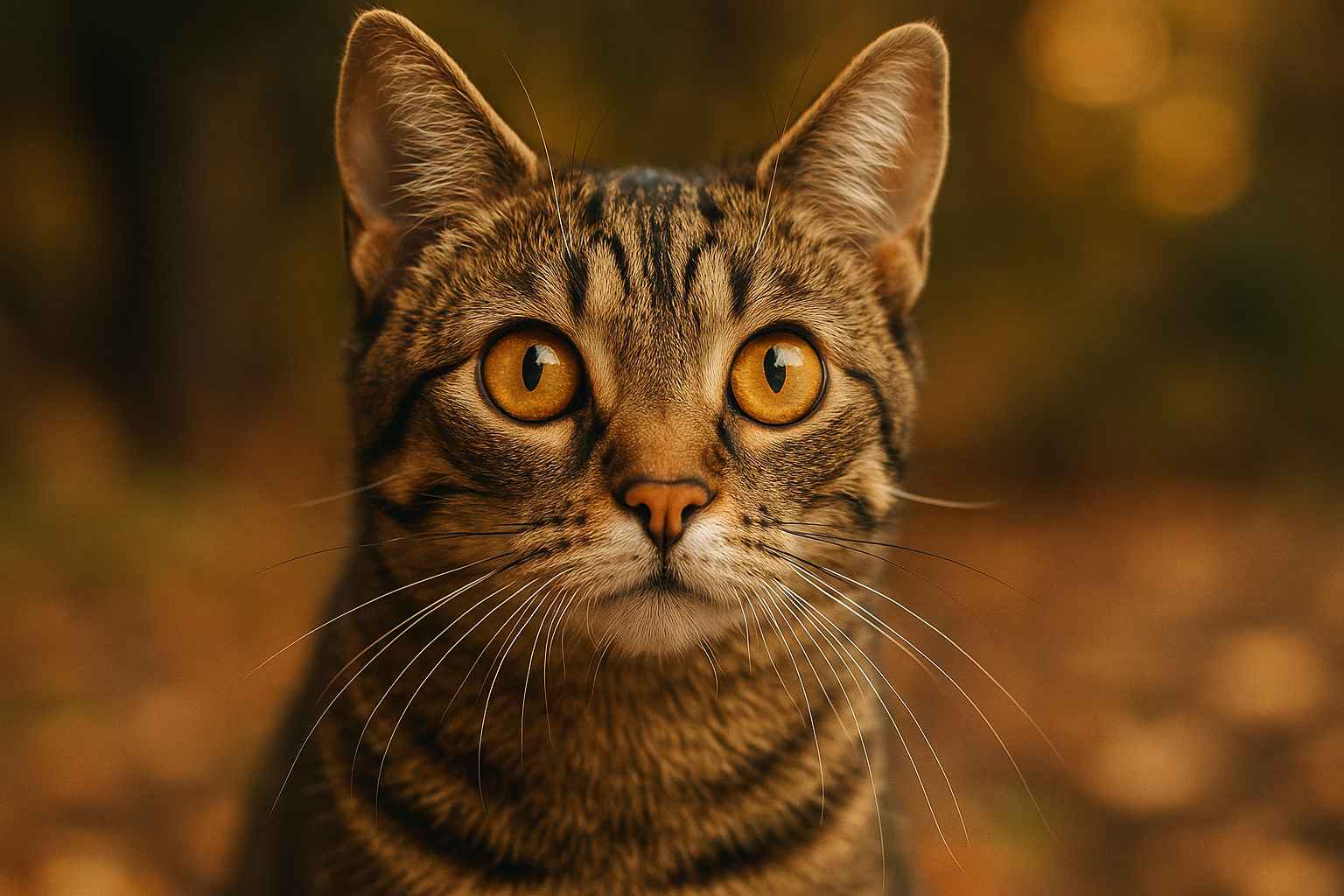It is a curious thing to share our lives with creatures so deeply rooted in their wild past yet so uniquely integrated into our homes. Cats are masters of their domain, from the smallest apartment to the sprawling outdoors. Their behaviors, seemingly simple, are often the result of complex biology and millennia of evolutionary adaptation. We think we know them, but the feline world is full of fascinating secrets just waiting to be uncovered, revealing the true nature of our mysterious companions.
1. The Purr-fect Healer
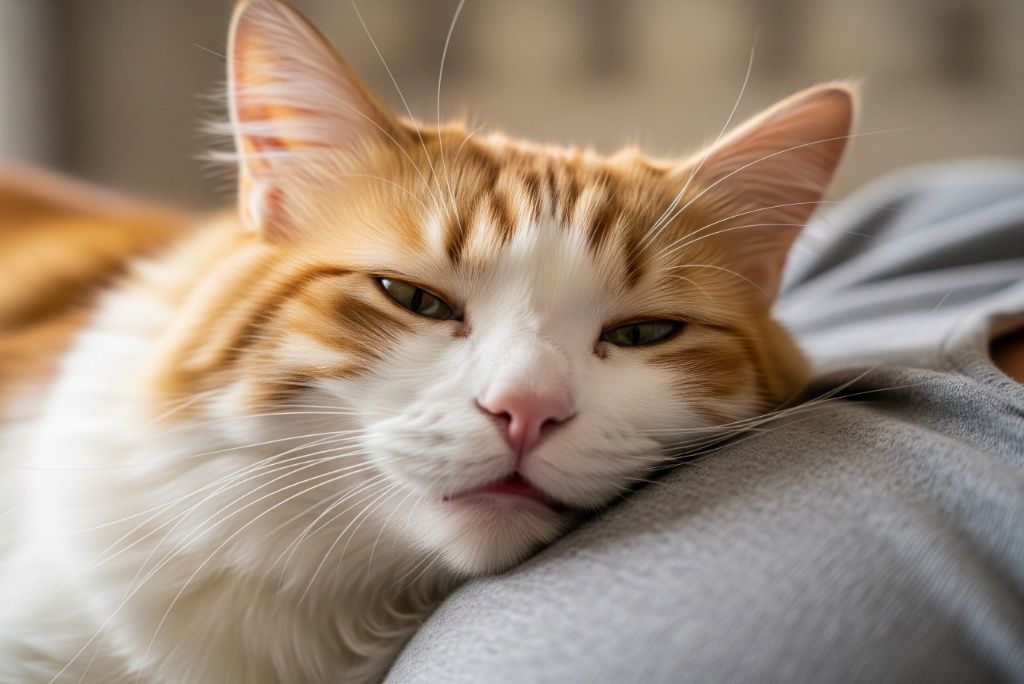
A cat’s purr is more than just a sign of contentment; it may be a natural healing mechanism. Research has shown that the frequency of a cat’s purr, typically between 25 and 150 hertz, is within the range that can promote bone density and healing.
This low-frequency vibration can not only help a cat’s own body repair itself but can also be a source of stress relief for humans. So, the next time your cat is purring on your lap, you may be experiencing a form of natural therapy. (The Library of Congress)
2. A Sweet-less Tooth
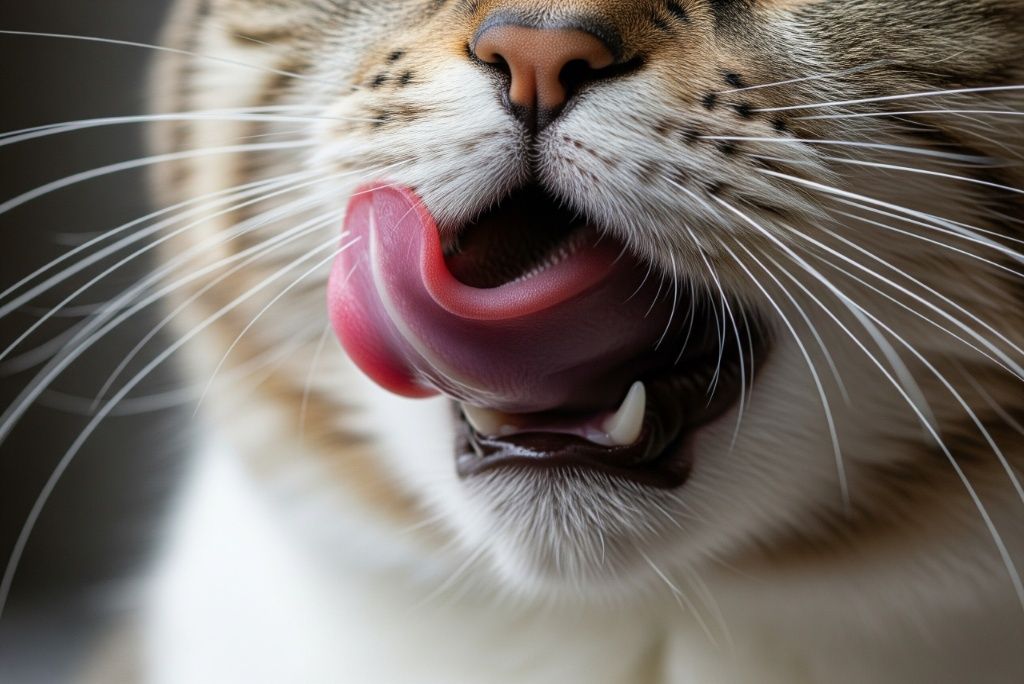
Unlike humans and dogs, cats cannot taste sweet things. This is because they lack the specific taste receptor for sweetness. This dietary limitation is believed to be a result of their carnivorous evolution, as their natural prey—small animals—doesn’t contain sugar.
Their most powerful response to food comes from their sense of smell, which is 14 times stronger than a human’s, compensating for their weak sense of taste. This is why a cat might seem like a picky eater; it’s often a case of what they can smell rather than what they can taste. (PAWS Chicago)
3. The Power of Whiskers
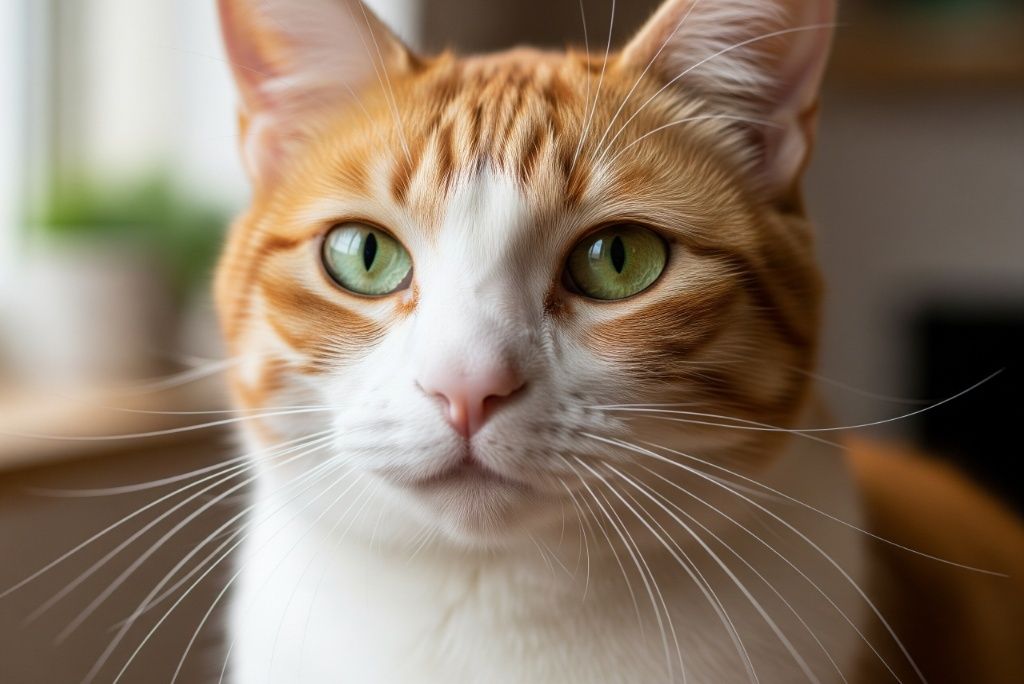
A cat’s whiskers are more than just long hairs; they are highly sensitive sensory organs. These specialized hairs, called vibrissae, are embedded three times deeper than regular fur and have nerve endings at their roots that detect changes in air currents, temperature, and even wind direction. This allows a cat to navigate in the dark and determine if they can fit through a tight space. Cats also have whiskers on the back of their front legs, which help them climb trees and hunt. (Purely Pets Insurance)
4. A Paw Preference
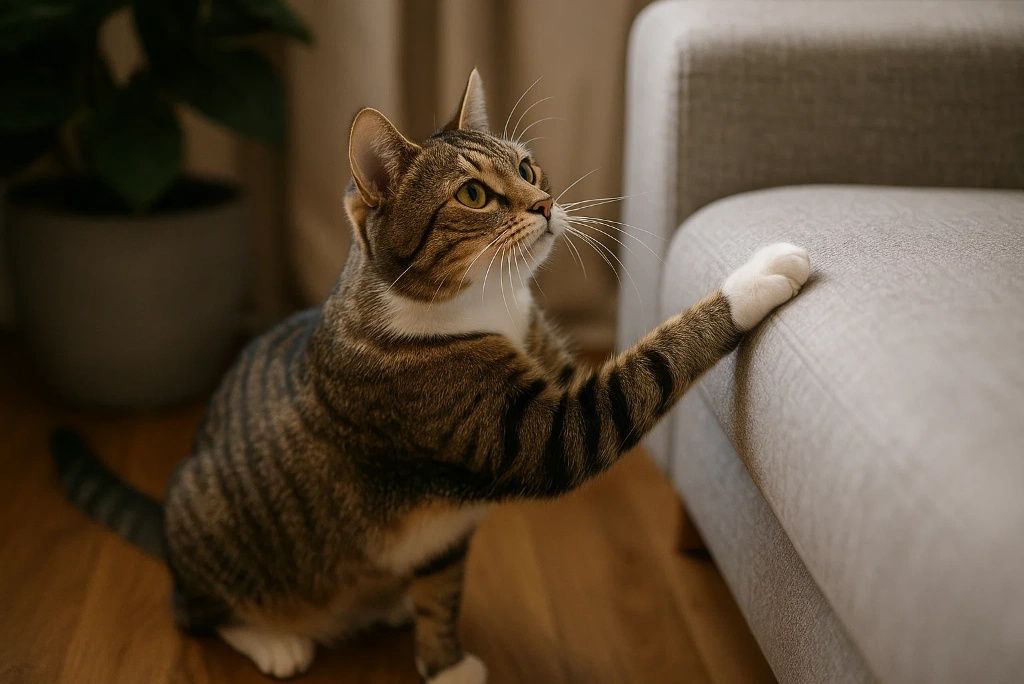
Just like humans, cats can be either right-pawed, left-pawed, or ambidextrous. Studies have shown that a significant percentage of cats show a preference for one paw over the other when performing tasks like reaching for food or playing with a toy. While many cats are ambidextrous, you can observe your cat closely during everyday activities to see if they consistently favor one side. It’s a subtle but fascinating insight into their unique individual personalities. (Neater Pets)
5. Tail Talk
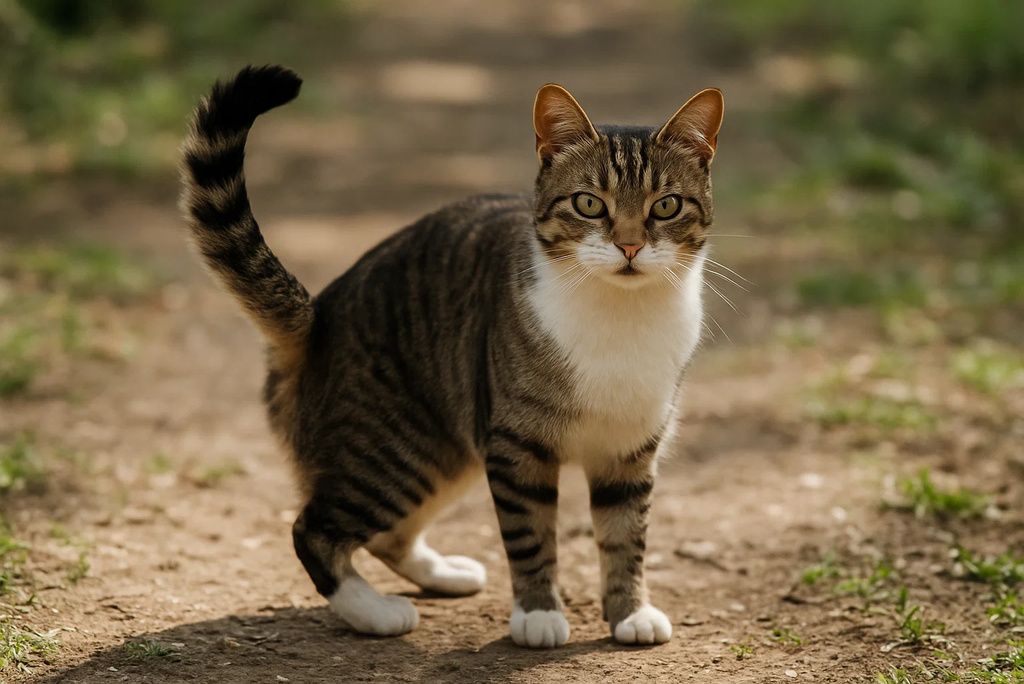
A cat’s tail is a complex tool for communication, expressing a wide range of emotions. A tail held high with a slight curve at the tip, similar to a question mark, is a sign of happiness and friendship. A tail that is twitching back and forth can indicate alertness and interest, while a tail that is thrashing strongly from side to side signals anger or irritation. By observing your cat’s tail, you can gain a deeper understanding of its mood and what it’s trying to tell you. (Wedgewood Pet)
6. The Long and Short of Memory
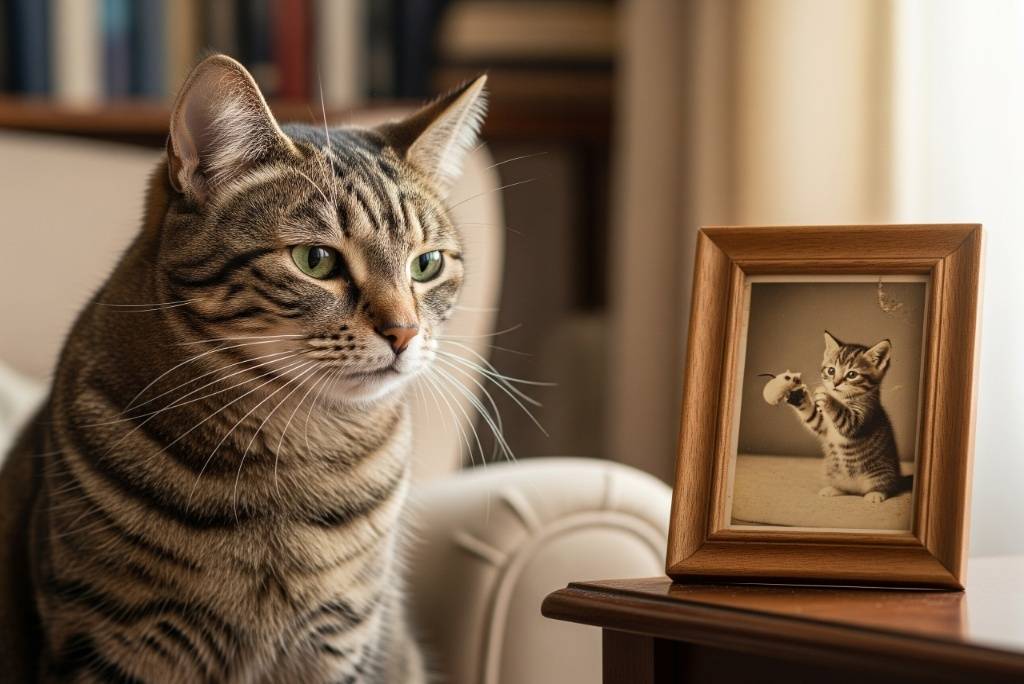
Cats have an impressive long-term memory, retaining information for a decade or more. This is particularly true for memories tied to emotions, allowing them to recall both positive and negative experiences associated with specific places or people.
For example, a cat will remember where its food bowl is for years and will also remember a negative experience with a specific person. Their memory is a key factor in their problem-solving abilities and observational learning. (Bond Vet)
7. The Semi-Domesticated Hunter
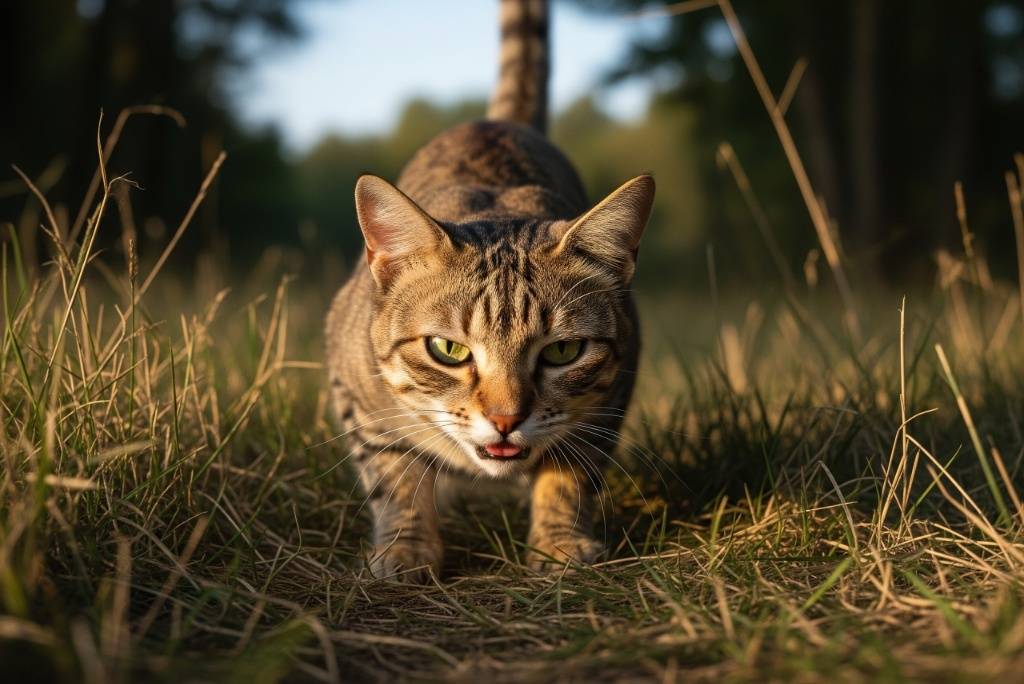
Cats are often referred to as “semi-domesticated” because their DNA is still remarkably similar to their wild ancestors. Unlike dogs, which have been selectively bred for thousands of years to be dependent on humans, cats retain many of their wild instincts, such as the ability to hunt and navigate using their senses. This is a mutually beneficial relationship that began with agriculture, where cats hunted rodents in exchange for a reliable food source. (Hill’s Pet)
8. Ears That Can Do a 180
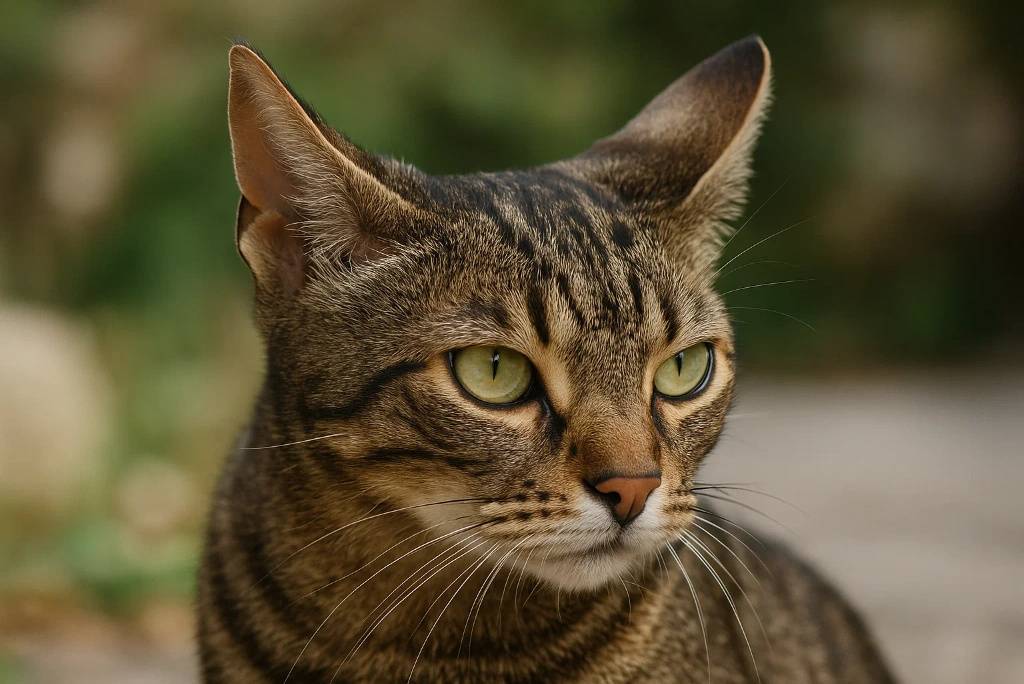
A cat’s ears are a masterpiece of engineering. With 32 muscles in each ear, they can rotate them independently by a full 180 degrees. This allows them to pinpoint the exact location of a sound, helping them hunt and remain aware of their surroundings. This ability gives them an incredible advantage over prey and is a key reason for their exceptional hearing. It also plays a role in their balance and communication with other cats. (Cat Museum Budapest)
9. A Clowder of Cats

A group of cats is officially known as a “clowder.” While cats are often seen as solitary creatures, free-living domestic cats frequently form colonies, especially if they have access to a stable food source. These colonies are typically made up of related females and their kittens, where they engage in communal activities like grooming and kitten-rearing. Males are also present in these colonies for reproduction and defense. (Wikipedia)
10. The Tongue’s Little Spines
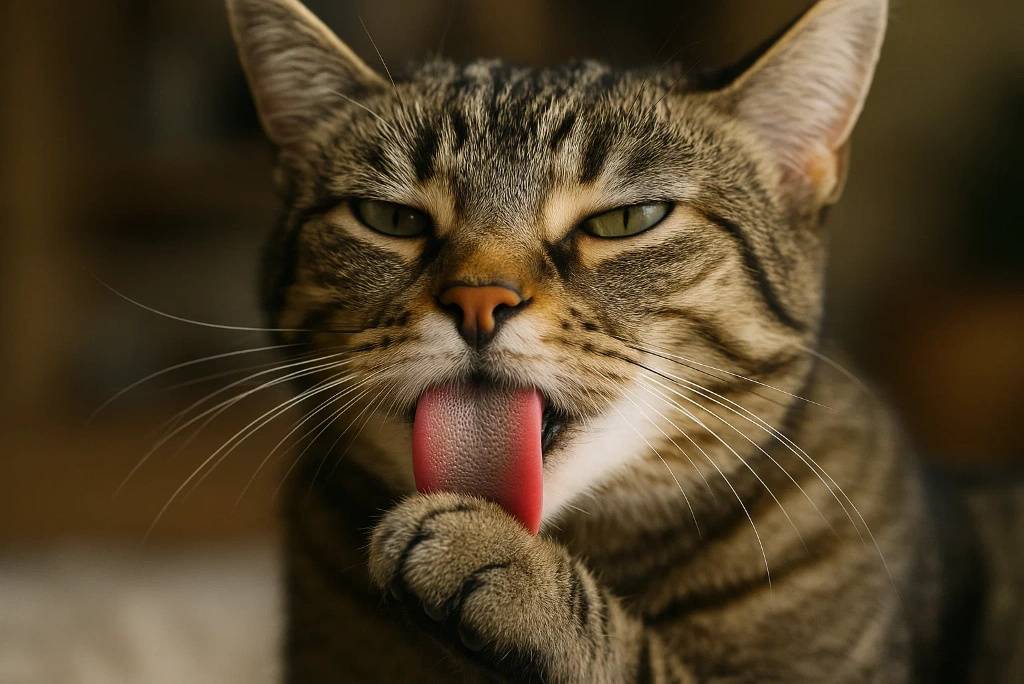
The sandpaper-like texture of a cat’s tongue is due to tiny spines, or barbs, made of keratin. These barbs, called filiform papillae, serve several purposes. They act like a comb, helping the cat groom itself and remove loose fur. They also help a cat strip meat off bones and hold prey securely in its mouth. These specialized spines are a testament to the cat’s predatory nature and their meticulous approach to hygiene.
11. The Catnip Response
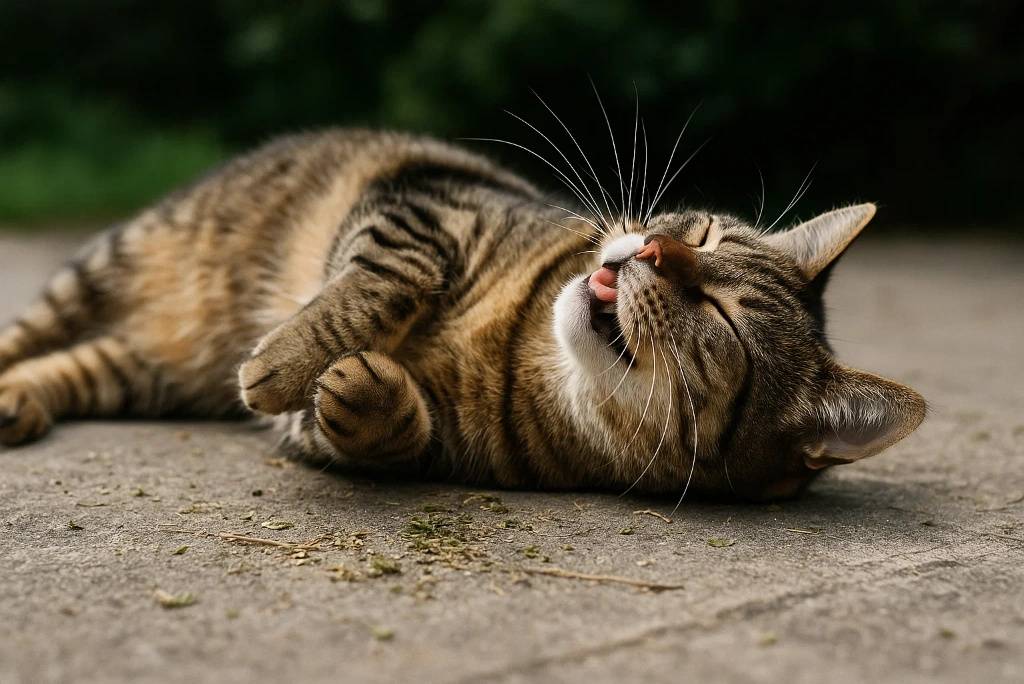
Not all cats are affected by catnip. The reaction to this herb is hereditary, and it’s estimated that about 50% of cats possess the gene that makes them susceptible to its effects. If a cat is responsive, the nepetalactone compound in catnip can produce a euphoric reaction, a temporary buzz, or a feeling of relaxation. However, if your cat is not affected, they simply lack the genetic makeup to react to the plant’s compounds.
12. Vision in Low Light
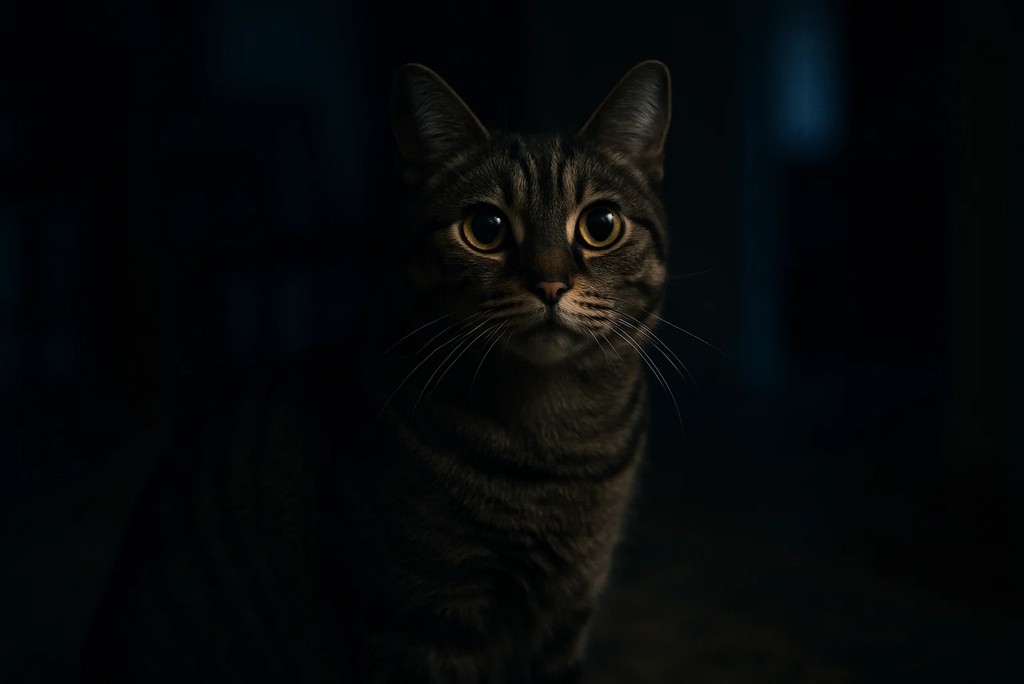
Cats are known for their excellent night vision, but they can’t see in total darkness. Their eyes have a reflective layer at the back called the tapetum lucidum, which reflects light and causes their eyes to “glow” in the dark. This layer increases the amount of light passing through the retina, allowing them to see much better than humans in low-light conditions. However, their color vision is limited, as they have fewer cones in their eyes, making blues and yellows more visible than greens and reds. (FirstVet)
13. High-Pitched Meows for a Reason
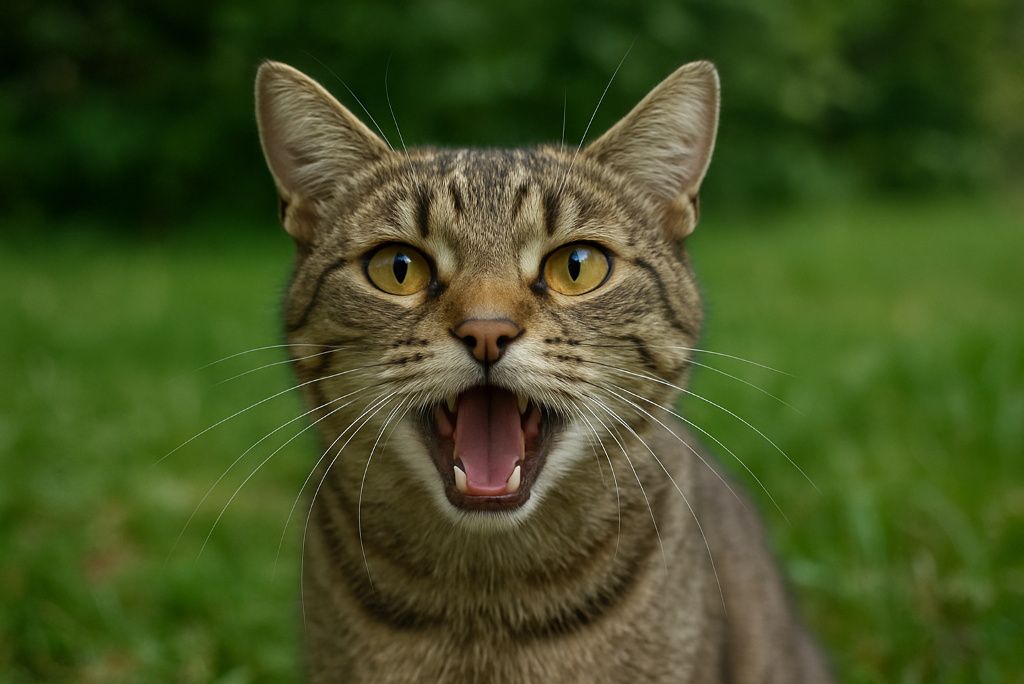
Adult cats typically meow almost exclusively to communicate with humans rather than with other cats. Kittens use meows to get attention from their mothers, and as they grow, they continue this behavior with us, essentially treating us as their eternal parents. A high-pitched meow can often signal that a cat is startled, hurt, or seeking urgent attention, while a longer, more drawn-out meow can indicate worry or annoyance. (Modern Cat)
14. The Kneading Ritual
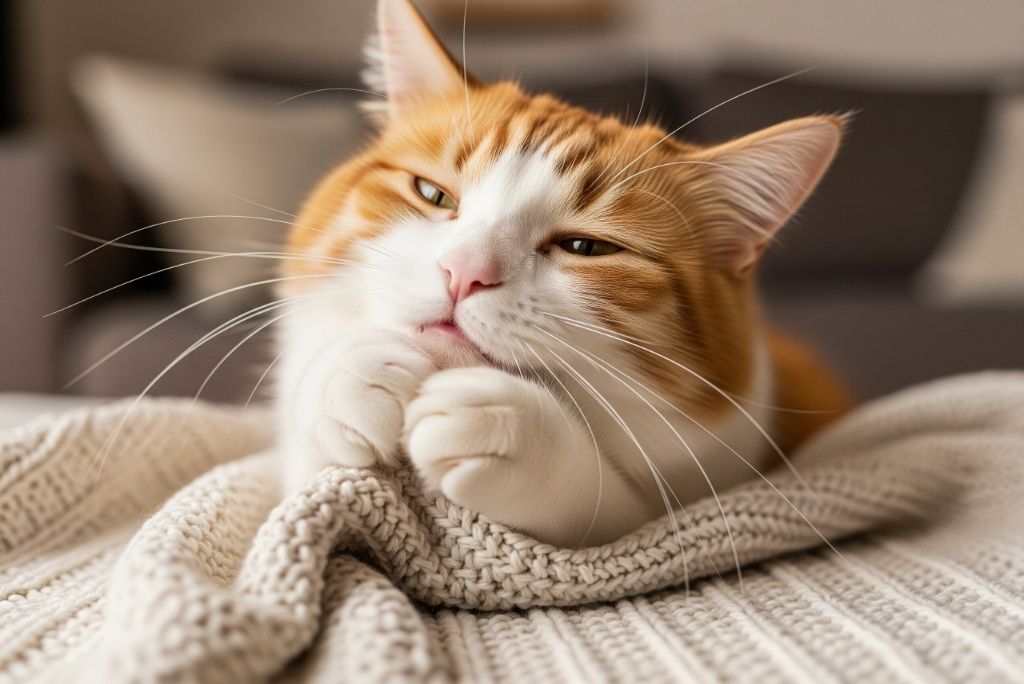
The act of “making biscuits,” or kneading, is a sign of a relaxed and contented cat. This behavior originates from kittenhood, where they knead their mother’s belly to stimulate milk flow. As adults, they continue this motion when they feel safe and comfortable, often on a soft surface or their owner’s lap. The motion is often accompanied by purring, and it’s a deep-seated instinct that brings them a sense of security and happiness. (The University of Tennessee)
15. The Third Eyelid
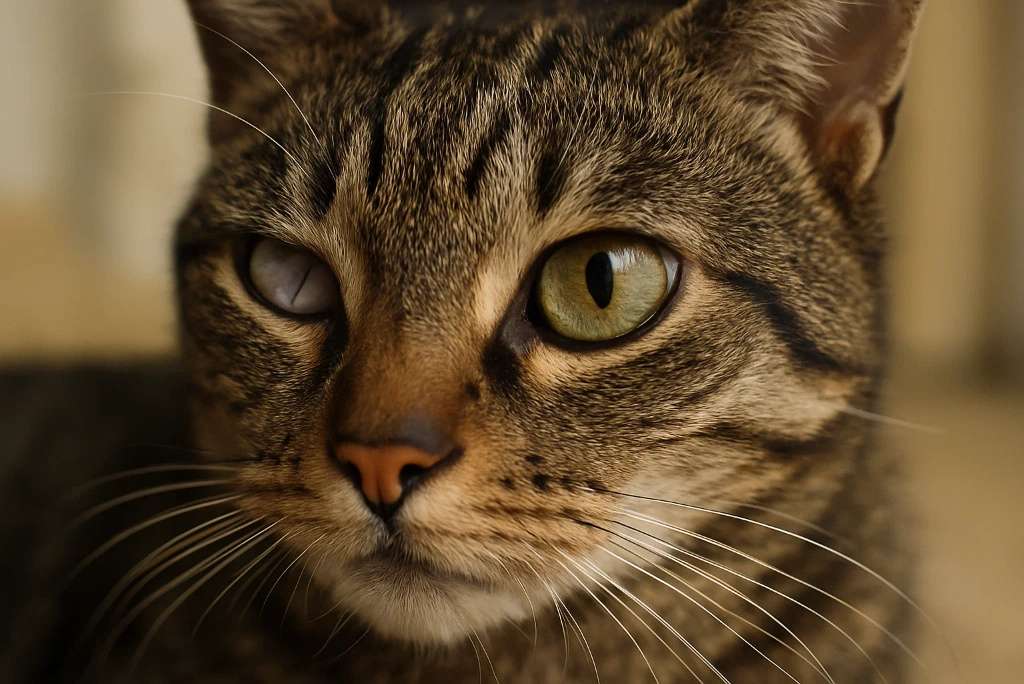
Cats possess a third eyelid, referred to as the nictitating membrane. This tissue is located in the corner of the eye and is designed to protect the eye from injury and keep it moist. It also contains glands that produce a portion of the cat’s tear film. The third eyelid is usually not visible, but if you see it constantly, it could be a sign of a health issue, such as inflammation or injury, and should be checked by a veterinarian. (Cat Museum Budapest)
Disclaimer: This article is for informational purposes only and does not constitute professional medical advice for your cat. Always consult a qualified veterinarian or animal healthcare provider for any questions or concerns you may have regarding your pet’s health. Do not disregard professional veterinary advice or delay seeking it because of something you have read here.

